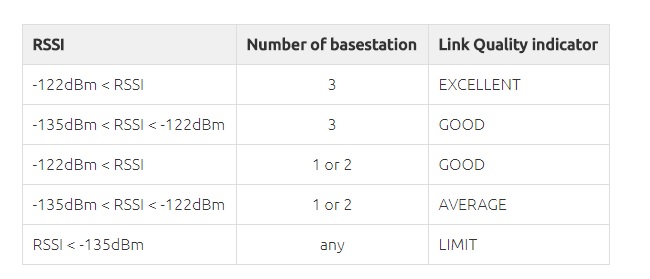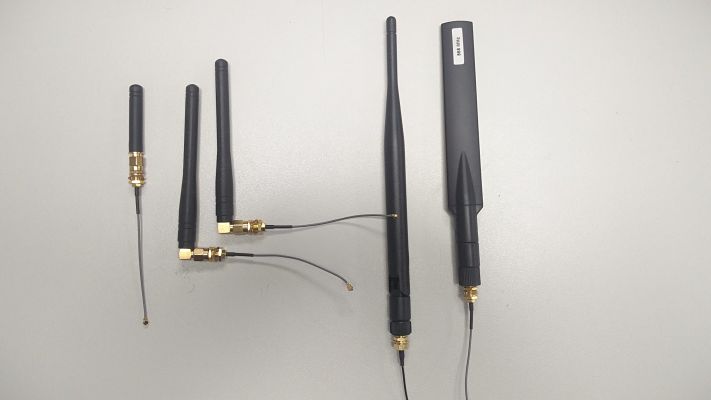FiPy sigfox antenna issue
-
Hi folks, my first message here.
I bought 2 fipy modules + 2 expansion boards + 1 Lora/Sigfox antenna (all from Pycom). Fipy modules are updated to the last FW version.
Thing is with the supplied antenna I'm having a lot of difficulties to send Sigfox messages succesfully both indoors and outdoors. However, I had some older 868MHz antennas over here (4 in total) and I succesfully managed to communicate... but just with one of them.
With this antenna I've been communicating succesfully for 4 days every 10 minutes and not a single packet has been lost. But with the other ones, including the supplied by Pycom, not a single packet is received.
Any idea about what is going on? I don't really think all the antennas are broken but the one. In fact, I've been able to communicate both modules via Lora with the supplied examples.
By the way, I'm in Spain, south-east region (Murcia), just in case.
Thanks in advance for your suggestions or ideas.
-
@jmarcelino even in outdoors (completely flat field) the reads are erractic. Could you confirm me that the class of the tranceiver in FiPy is 0U??
-
@jcaron Hi, we are talking about FiPy module here so...
-
Just to make sure (shouldn't be the case here as it works with one of the antennas, but you never know...), have you double-checked the antenna is connected to the right port on the LoPy? The 868 MHz port has moved between the LoPy 1 and LoPy 4, so it's easy to be confused.
-
Coverage indoors is really very hard to predict, building materials and even material shapes react very differently to RF.
Have you tested outside? Do more antennas work there? Try a few locations, especially away from tall buildings.
Testing P2P on Sigfox would not be relevant because the old (no longer supported) P2P code uses FSK modulation while Sigfox protocol itself uses a different one with much better performance.
In Europe the legal limit for transmitters in the ISM frequency bands used by Sigfox and LoRa is 14dBm but you have to consider the entire system, from the transmitter power, cable/connector losses and antenna gain.
I can't imagine there's any damage to the FiPy especially since you've tested LoRa and it works. LoRa and Sigfox use the same radio transceiver chip on the FiPy. It's just the reality of radio transmissions.
-
Hi @robert-hh @jmarcelino ,
Unfortunately, I know very little on antennas :(.
In my location, based on Sigfox webpage I should have 3+ base station for class device 0U (like FiPy) even for a 20dB link margin (indoors). So, on that end, I should assume there is no problem.
Now, regarding RSSI, Sigfox publishes this chart:
https://resources.sigfox.com/document/link-quality:-general-knowledge

So, an RSSI of -135dBm should be the limit, right? Now, do you think that from the antenna working to the othe ones the RSSI could go from -107dBm down to -135dBm and beyond?.
@robert-hh I'm not able to test P2P communication since this is not enabled in latest FiPy firmware (although in the documentation it stills appears are enabled). However, as I said before I was able to communicate P2P with LORA using different antennas.
@jmarcelino I'm not sure about the legal limitations. Could you point me where to check them?. I mean, is related to transmit power or the antenna gain?
At this point, do you guys think that FiPy modules could be damaged somehow?
Regards!
-
@sanatox I tried several different antennas with LoPy and FiPy. Some like the second from the left on your picture (wavelength/4), some like the one second from the right on your picture (wavelength/2), and two different wavelength/4 ground plane antennas (one purchased, the other home made). They all work with slight variations in the transmission level, about 10 dB. Since I have no proper test environment, I cannot quantisize that exactly, beside the observation, that the wavelength/2 and ground plane antennas are more forgiving in set-up. For the wavelength/4 antennas (the short one on the left) you have to provide a ground plane for proper operation. That could be a sufficiently large (> wavelength/4) metal case or mounting bracket.
So: Since the best antenna gives you an rssi at -107 dB, it is not unlikely that worse antennas simply do not work, at your place. Did you try device-to-device communication at shorter distances?
-
@sanatox
The antenna supplied with the LoPy is a 2.2dBi 1/2 wave center-fed dipoleThe antenna on the right looks like one of the LTE antennas we use with 8dBi gain so it might be related to that - just more directional which is giving you that extra edge to get your data across.
While it's good that you manage to connect with it be aware the combined transmit power and antenna gain may be over the legal limit.
-
Hi @jmarcelino,
antennas are different but unfortunately I do not have the documentation for them. I could not find the specs for the one pycom provides either :(. Could you help me with that?
I have tried to put the antennas horizontal, vertical, indoors, outdoors... it just works with the one (no matter the orientation).
Link status as provided by Sigfox is:
Average SNR: 44.21 dB
Average RSSI: -106.93 dBm(All messages arrive as "Good" or "Excellent" with the working antenna).

The antenna working is the rightmost one.
Any other suggestion? Something I could try? Are there any technical details for the antennas we should use for Sigfox?
Best regards!!
-
@sanatox
Are all antennas the same? Perhaps they have different gains or radiation patterns. Have you tried different orientations? Pycom antennas tend to work better standing vertical.When you're trying to push signal in edge-case scenarios every detail matters..